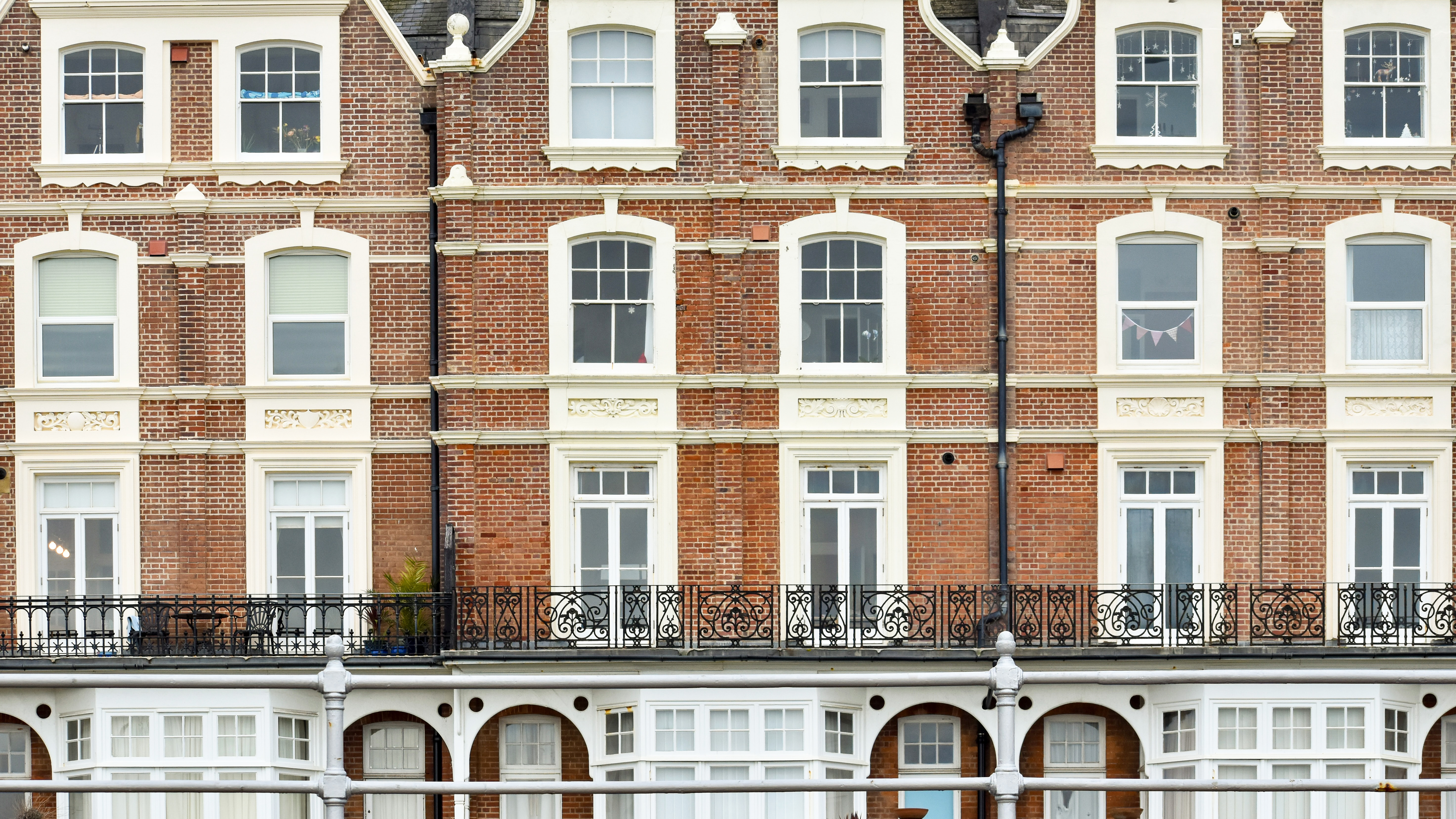
Investment in build-to-rent (BTR) property has reached record levels, and it is no coincidence that this has occurred as the sector expands beyond traditional city apartment units into suburban communities – an emerging area for BTR that provides family homes and related services.
In its Residential Investment Report 2022, Knight Frank found that 70% of global institutional investors surveyed anticipate being active in the suburban BTR market within the next five years – a substantial increase from the current figure of 42%.
The same survey found that institutional investors planned to put a record £16.5bn into residential assets in 2022 – a 65% increase from the £10.2bn spent in 2021. The opportunities for developers are considerable and could counter a slump in the residential sales market.
This is substantiated by the British Property Federation (BPF) Build to Rent Q3 2022 report, which showed that the sector had grown by 15% compared with a year earlier, with a total of over 240,000 homes either in planning, under construction or completed. According to Ascend Properties, BTR investment has actually increased by an incredible 335% in the past decade.
There is also potential for significantly more growth, as BTR currently accounts for no more than 2% of the private rented sector (PRS). Research by Knight Frank found that completed stock accounts for 1.3% of all households in the PRS, rising to 2.2% when accounting for the pipeline of stock under construction.
Furthermore, the market is certain to grow. Even before the cost-of-living crisis and rising mortgage rates began to deter prospective first-time buyers from getting on the property ladder, the proportion of households renting privately was increasing.
According to the English Housing Survey 2022, the market has increased by 93% in the past 15 years, while the number of owner-occupied households has grown by just 3% over the same period.
'The opportunities for developers are considerable and could counter a slump in the residential sales market'
Suburban BTR offers investor and family appeal
In contrast to the traditional BTR market, suburban BTR communities have evolved to meet growing demand, and are concentrated outside the city rather than in or near the centre. The market focuses on families rather than young professionals and houses rather than apartments, and typically offers shared outdoor spaces in place of apartment blocks with shared internal spaces.
The suburban communities translate the hugely popular values of traditional BTR including flexibility, simplified administration, energy efficiency and community into a new context.
The key differences between this model and typical new settlements built primarily for market sale are service and flexibility. BTR packages generally offer tenants property maintenance, various amenities such as a concierge, maintenance service, retail and leisure facilities and the flexibility to move with ease from one unit to another as their requirements change.
Many institutional investors that consider the traditional BTR market saturated recognise the substantial opportunities presented by these suburban communities, specifically as a way to meet rising demand from families who want to rent.
In November 2021, the BPF analysed the tenant make-up of suburban BTR schemes across the UK and found that families equated to 43% of households – almost double the number present in urban or traditional BTR. Suburban BTR was also found to attract a wider age range of tenants, reflecting a growing trend for multigenerational living.
The suburban community model appeals to investors because it can provide a means to buy a portfolio of individual homes – arguably the most profitable residential product – that can be aggregated into a single investment unit.
We are seeing many clients that previously invested in traditional buy-to-let (BTL) portfolios moving towards the BTR model: investing in BTR companies, rather than purchasing and managing an investment property.
This is partly because of the irrefutable demand, but also because these investments yield more than most residential or commercial assets due to the high level of services and reliable management.
Valuing Residential Property Purpose Built for Renting, 1st edition
It is important for valuers to possess the appropriate expertise and skill to understand the operation of the market and the impact, as well as the motivation, of those participants expressly seeking to acquire and hold an asset for long-term rent.
This guidance note gives guidance on the general approach to valuation that should be adopted for the build-to-rent part of the residential investment sector and recognises that – reflecting market practice – the principal basis should be an income-driven one.
Traditional rentals face tighter regulation
The opportunity to professionalise the PRS through investment in BTR companies in place of individual property investments is well timed, as rising interest rates and potentially falling house prices have led people to consider rental as a good short- or medium-term option.
The investment opportunity also comes at a time when the traditional PRS is under substantial pressure. Individual landlords face a raft of new regulations introduced by the UK government in its intention to professionalise the PRS, as detailed in the June 2022 policy paper A fairer private rented sector, with the Renters Reform Bill due to go before Parliament later this year.
Essentially, the government's aim is to rid the market of rogue landlords and for the gap in the market to be filled by institutional investors and corporate landlords. The withdrawal of thousands of 'amateur' landlords from the market has led to a significant shortage of rental properties.
According to Zoopla, demand for rental homes is at its highest level in over a decade and is exacerbated by a lack of supply: the number of homes available to rent is 38% below the five-year average, while rental enquiries are 46% above average.
Rental demand grows as demographic changes
Government figures also demonstrate the extent to which the market is growing. The number of renting households with dependent children has doubled since 2003-04, making up 30% of the sector.
Furthermore, the number of comfortable renters – defined as those in managerial professions, who hold degrees and are in good health – has grown as well, representing 44% of rentals. Of these, around 1.94m households are expected to rent for the long term.
This growth and the shift in demographic profile has accelerated the growth of suburban BTR, which can provide desirable homes for families in fully functioning, serviced communities. Those who have previously experienced the high level of service of traditional BTR are thought likely to provide the core market for the suburban communities.
Portfolios represent more secure investment
BTR suburban communities offer other distinct advantages for investors. The variety of property types in any one portfolio – which include not only residential but the commercial, retail and leisure uses to support these communities – creates immediate sales and long-term rental revenue, with the potential to spread the investment according to market conditions.
With higher inflation likely for the foreseeable future, residential property is invariably a safer option than more fluid investments. Indeed, its value has increased by more than 60% over the past ten years according to Nationwide. Despite political and economic uncertainty, figures from the Office for National Statistics show new-build prices up 26.5% in a year.
In 40 years as a lettings and management agency, Leaders Roman Group has seen institutional investors disregard residential property as too fragmented and management-intensive. Free of these restraints, though, the suburban BTR communities model can appeal to investors specifically because it enables them to acquire a portfolio of residential and commercial properties, aggregated into a single investment unit.
Amalgamation with other property classes, including the later living sector and affordable housing, as well as joint ventures where cross-subsidies can be available and public–private partnerships are adding to the wide-ranging appeal of these communities.
Other markets indicate the unexploited potential for rental in the UK market. In Europe, a high proportion of families rent, with as many as 60% in Switzerland for instance, and in the USA the predominant form of BTR – accounting for 70% of the market – is larger, family-oriented homes in low-rise suburban developments.
Before the pandemic, institutional investment in UK real estate focused on commercial property. But the world has changed, and residential property is now demonstrably the more robust asset class, with yields consistently outstripping those of the commercial sector.
We have seen significantly increased interest in BTR from institutional investors, including owners of either commercial or retail properties – which may be converted into residential uses under permitted development rights – as well as retail property investors and operators. These include the John Lewis Partnership, which has recently revealed the first three locations where it plans to debut its ambitious plans for the BTR market.
Renewable energy opportunities herald sustainable sector
BTR suburban communities also offer the chance to address environmental, social and governance (ESG) goals, which rank highly among institutional investors' objectives.
Corporate entities entering the BTR market are prompted by social responsibility: John Lewis plans to address inadequacies in the PRS by providing 'the trust, quality and service that people expect from [the company,] and potentially offering discounted rents to [its] 80,000-strong workforce'.
Furthermore, with up to 20% of GDP globally at risk from carbon emissions and institutional investors committed to meeting net-zero targets, the BTR sector is at the forefront of innovation in energy efficiency. Provisions such as combined heat and power plants, renewable energy and other sustainability measures can be incorporated effectively into suburban BTR communities given the potential efficiencies of scale on offer.
The main reason that homeowners have so far been reluctant to adopt renewable energy devices such as air-source heat pumps is that they are often concerned about maintenance. Where snagging, maintenance and emergency work is the responsibility of experienced property managers, this is no longer a reason to forgo the more sustainable option.
Recent BPF analysis states that the BTR sector could be worth £170bn by 2032, with the number of units set to rise from 76,800 to more than 380,000. Our experience to date substantiates this prediction, and we look forward to the inevitable rise in suburban BTR communities in the UK.
'Recent BPF analysis states that the BTR sector could be worth £170bn by 2032'
Andy Jones is group director, corporate and BTR at Leaders Romans Group
Contact Andy: Email
Related competencies include: Planning and development



